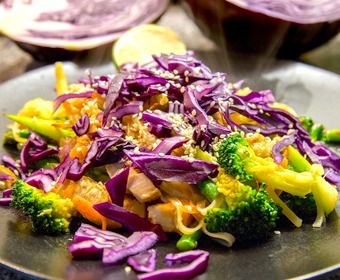T'is the season of kale and cabbage. Many varieties make their appearance in late autumn/fall and are at their best during the cold months of the year. But do you which is which and how do you cook it?
Plants in the cabbage family – "brassica" – are nutritious, cost very little, can be cultivated in many areas and climates and taste sweet and crispy – depending on the cooking technique applied.
There are three main groups:
- Headed cabbages grow in dense-leaved, spherical heads, such as white cabbage and red cabbage.
- Leaf cabbage grows from the stem in long leaves, such as kale and black kale.
- In flower bud cabbages, such as broccoli and cauliflower, the main edible part, or "curd", is technically a flower.
Kohlrabi, with the swollen base of the stem, has its own thing going on, but belongs in this crowd because of the clear cabbage taste.
Just a few things you can do with cabbage:
White cabbage goes well in all salads. Shredded raw with a little lemon juice, or sunflower seeds, or with apple and fresh mint leaves.
Red cabbage is the prettiest of all cabbages when raw and its sweetness goes well with oranges and raisins. Try it in a warm salad.
Red cabbage, white cabbage and cone cabbage all go well in salads that, in turn, go well with "heavy" foods. Shred the cabbage and leave it to soak in salt for a while to bring out more flavor. Instead of the usual potatoes: Cut the cabbages lengthwise in quarters (or smaller, depending on size), steam or boil lightly, and gratinate in the oven ("open" side facing upwards) with a tasty cheese. Or just with olive oil, black pepper and salt.
Broccoli and cauliflower can be turned into smooth, filling and fulfilling soups. Or heat up the pretty "flowers" for a short time over high heat in a wok or a sauteuse. If you have some duck fat for frying and sea salt, you don't need much else...
Are brussel sprouts not your favorites? Try frying them in halves in generous amounts of butter and round off with sugar and balsamico vinegar.






